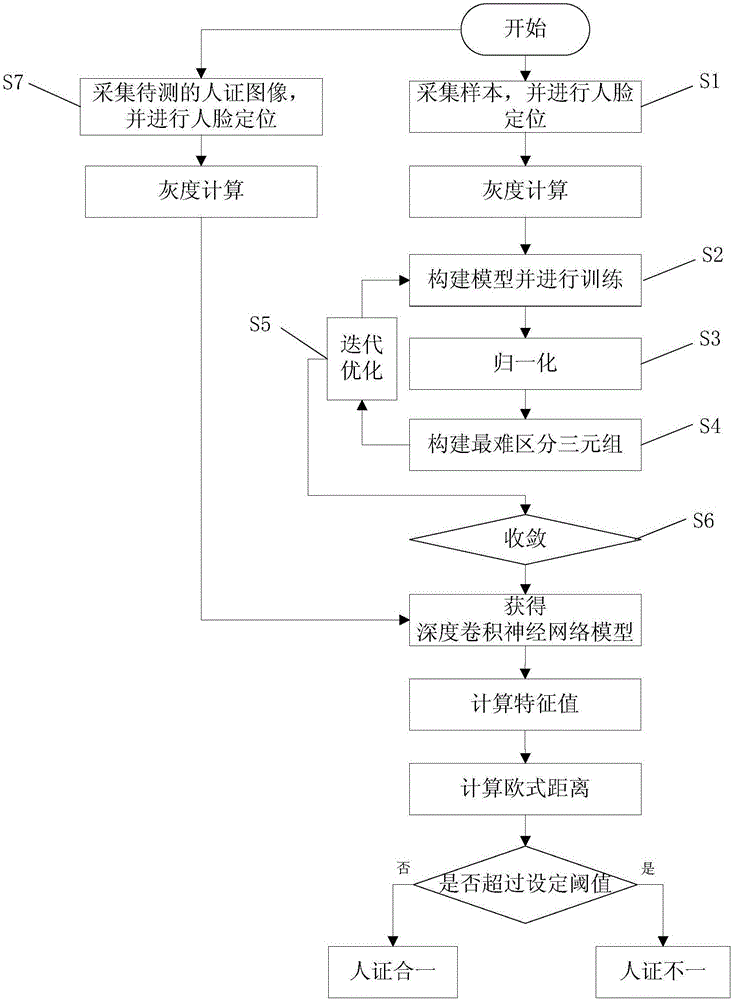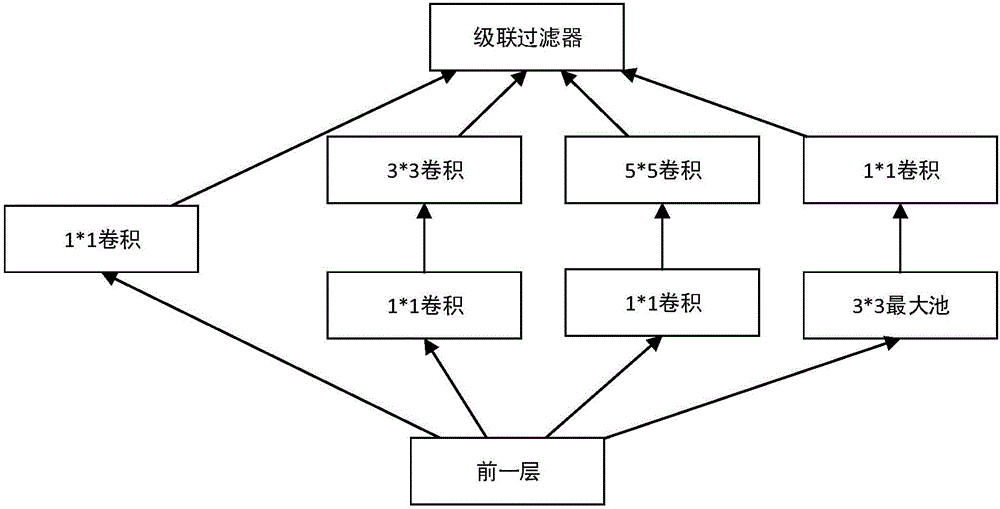Witness and evidence integration recognition method and system based on deep convolutional neural network
A convolutional neural network and deep convolution technology, which is applied to biological neural network models, neural architectures, instruments, etc., can solve problems such as poor reliability and low recognition rate of human-evidence integration, and achieve improved accuracy and robustness sexual, performance-enhancing effects
- Summary
- Abstract
- Description
- Claims
- Application Information
AI Technical Summary
Problems solved by technology
Method used
Image
Examples
Embodiment 1
[0036] This embodiment provides a training method for a two-dimensional face recognition model based on a deep convolutional neural network, such as figure 1 shown, including the following steps:
[0037] Step S1: Use the face image acquisition module to collect face sample images: when collecting face samples, the distance between the face and the camera is 30-60 cm, look directly at the camera, keep a natural expression, and slowly move back and forth, left and right In the process, various expressions and gestures can be revealed. Acquire a face image every 2 seconds, and capture 10 images for each person. The sample images can also be directly replaced by images in the standard face image database.
PUM
 Login to View More
Login to View More Abstract
Description
Claims
Application Information
 Login to View More
Login to View More - R&D
- Intellectual Property
- Life Sciences
- Materials
- Tech Scout
- Unparalleled Data Quality
- Higher Quality Content
- 60% Fewer Hallucinations
Browse by: Latest US Patents, China's latest patents, Technical Efficacy Thesaurus, Application Domain, Technology Topic, Popular Technical Reports.
© 2025 PatSnap. All rights reserved.Legal|Privacy policy|Modern Slavery Act Transparency Statement|Sitemap|About US| Contact US: help@patsnap.com



